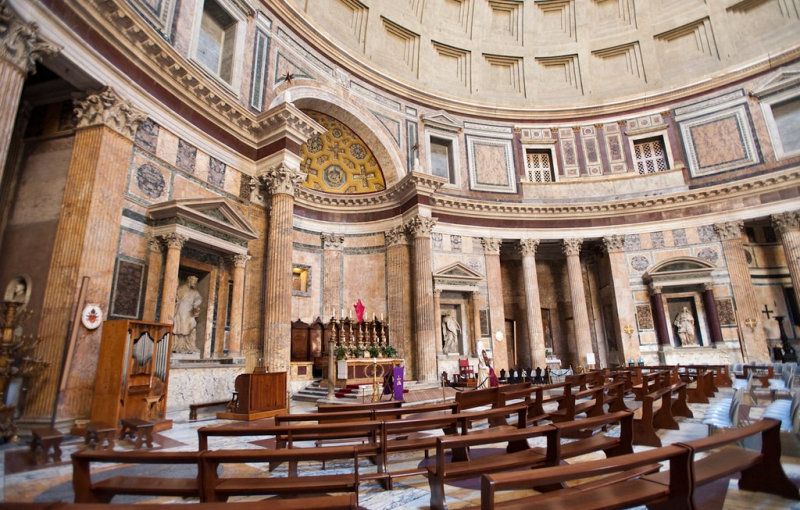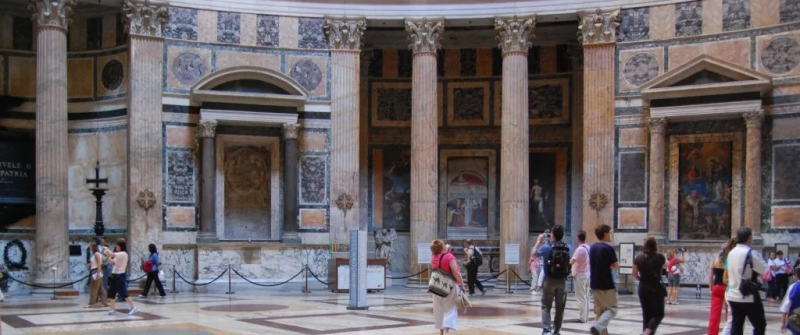Pantheon (Basilica of St. Mary and the Martyrs)
The Pantheon, which is prominent among the city's Roman-era landmarks and was constructed around AD 120 as a temple to honor Roman deities, is now a Catholic church. It has been since Pope Boniface IV converted it and dedicated it to St. Mary and the Martyrs at the start of the seventh century.
The building has essentially not changed over the centuries, even though its stones, columns, statues, and even a portion of the original bronze ceiling were cannibalized for other purposes (in the 1600s Pope Urban VIII ordered the portico ceiling to be melted down to cast cannons for Castel Sant'Angelo), and its dome is still the largest unreinforced concrete dome in the world. Since the Renaissance, notable people have been buried at the Pantheon, including Vittorio Emanuele II and Umberto I, the two Italian kings, Raphael, and composer Arcangelo Corelli. Since the summer of 2018, the Pantheon has started to collect a small admission price, ending centuries of being one of the free activities in Rome.












